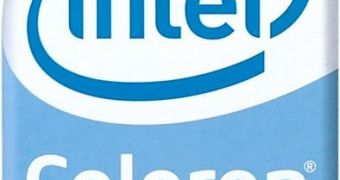Launched just a few days ago, Intel's first Celeron processor based on the Sandy Bridge architecture, packs even less features than anyone expected as the company has decided to cripple its integrated GPU by disabling the Clear Video technology.
The first Celeron processor to be built using Intel's latest architecture is called the B810, features dual processing cores clocked at 1.6GHz and it is targeting entry-level notebooks and other mobile devices.
Just all the other Sandy Bridge chips, the Celeron B810 also packs an on-die GPU that works at 650MHz and can turbo to 950MHz, but, as SemiAccurate has discovered, the chip's graphics abilities have been severely limited.
This means that users who go with the B810 won't get WiDi or InTRU 3D support or any sort of Clear Video, regular or HD.
While it wasn't all that much publicized, the Clear Video technology has been part of Intel's GPUs ever since the days of the GMA 3100 graphics core and its job is to offload the CPU from video decoding tasks.
Without it, the processor has to handle media decoding, which places an additional load on the chip and also increases the power consumption and heat generated by the system.
Both of these issues are extremely important in mobile parts as they cut back into the battery life of the device, but, for some reason, Intel decided to let the technology go in its latest implementation of the Sandy Bridge architecture.
Right now, we don't know if Intel's desktop Celeron chips will follow the same path as their mobile counterparts, but I definitely hope this won't be the case.
Don't get me wrong, I didn't expect Intel to leave too many of the Sandy Bridge features enabled in Celeron CPUs (such as Quick Sync and AVX), or the Pentium line for this matter of fact, but pulling out even the regular version of the Clear Video technology seems a bit excessive to me.

 14 DAY TRIAL //
14 DAY TRIAL //